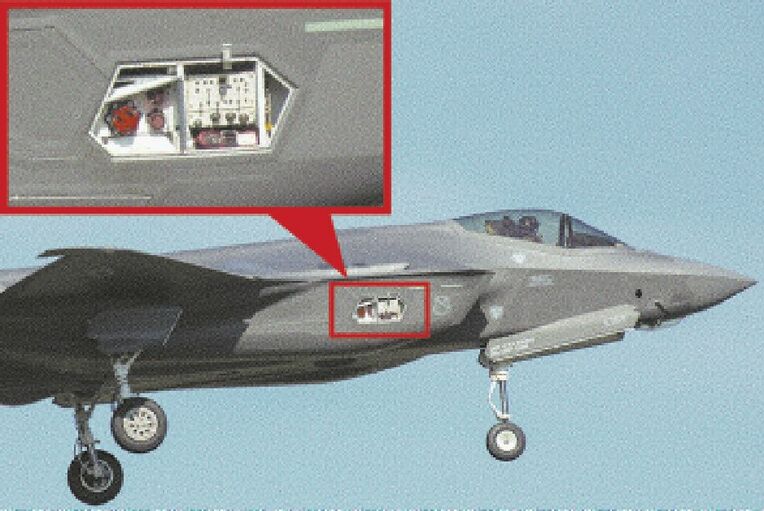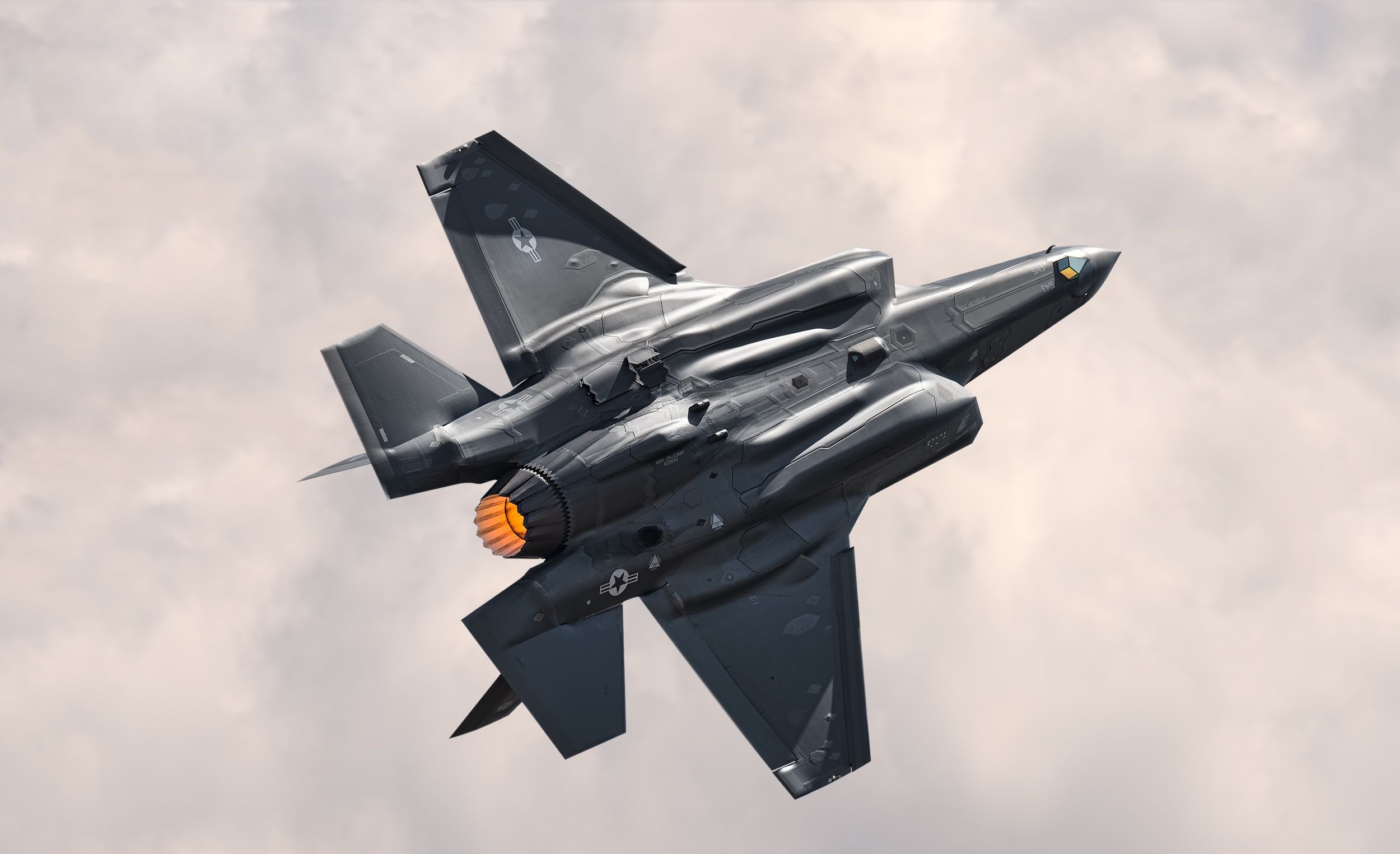On the morning of December 18, an F-35A Lightning II belonging to the US Air Force’s 356th Fighter Squadron touched down at the Japanese Kadena Air Base. In an unusual incident, it was discovered that a vital component of the stealth aircraft was missing when it landed.
After the incident came to light, a spokesperson of the Air Force said that the advanced stealth fighter that returned to its Okinawa base without a panel might have lost the part over the Pacific Ocean.
The spokesperson for the 18th Wing, which is the USAF’s hosting Wing at the Kadena air base, 1st Lt. Robert Dabbs, stated that the aircraft was missing a hexagonal side panel that measured 18 by 12 inches and weighed roughly two pounds. The panel is generally located on the aircraft’s right side, beneath the cockpit.
“Expectations are the panel departed the aircraft over water,” Dabbs was quoted saying. “We have not received reports of damage or injuries.”
The spokesperson noted that the 18th Wing was investigating the matter. He continued by assuring that the Wing was still fully committed to flight safety and rigorous training. The F-35 Lightning II had reportedly departed sometime for training in the morning of the same day.
The missing panel covers the external ports for electronic devices. Without the piece, the aircraft may no longer be able to disguise itself, thus eroding the aircraft’s stealth capabilities and making it an easy target for the enemy and its air defense systems.

A spokesperson of the Okinawa Defense Bureau representing the Japanese MoD said, “Ensuring safety is a major requirement for the operation of US military aircraft, and we will continue to request that the US side takes all possible precautions.”
Based at Eielson Air Force Base in Alaska, the F-35 is currently on a rotational deployment to Okinawa. Until a long-term replacement is identified, the aircraft serves as one of the stand-ins for 48 outdated F-15C/D fighters formerly stationed at Kadena.
In March, the 356th jets arrived in Japan from Eielson Air Force Base, Alaska. In addition, more F-35 Lightning II jets from the 4th Fighter Squadron joined in November.
The recent incident, which is now under investigation, is reminiscent of a similar incident that was first reported several years ago, in 2017, at somewhat the same location.
When F-35 Lost Its Panel In Pacific Six Years Ago
While flying a routine mission off the coast of Okinawa, America’s most advanced stealth fighters lost a panel in December 2017.
At the time, a statement from Kadena Air Base’s 18th Wing observed that a panel fell off an F-35A Lightning II at roughly 10:30 a.m., roughly 65 kilometers east of the southern island prefecture. The panel weighed one pound and measured around twelve inches in height and twenty-four inches in length. It was “probably lost over the ocean.”
According to the statement, the issue was discovered by the pilot’s wingman as the fighter got ready to land. The missing part was later confirmed by a post-flight check. The type of training being carried out at the time of the event was not disclosed by Air Force officials.
“The item was discovered missing by the pilot’s wingman as the fighter jets were coming in for landing” and was later confirmed missing after a post-flight inspection, the release stated at the time.
The incident ruffled some feathers as it was the first deployment of the F-35A Lightning II to the region. A dozen F-35As from the Utah-based 34th Fighter Squadron had arrived at Kadena last month for a six-month deployment just a month before this incident was reported.
Since there have been a number of accidents in recent years, the people of Japan are sensitive to tales of airplane crashes and falling components. The major driver for this was the 2019 sudden crash of a Japanese F-35 stealth fighter due to the spatial disorientation of the pilot.
In a recent incident, a V-22 Osprey went down late last month during a training mission just off Yakushima Island in southwestern Japan while it was on its way to Okinawa. The lives of all eight crewmen on board the aircraft were lost.
An F-35 losing a panel may not be life-threatening. However, it does add to the paranoia in the wake of the Lightning II crashes that have been reported over the years in different parts of the world. Moreover, without the panel, the exposed aircraft could also likely come into the line of fire by an adversary in the region.
The F-35A is the US Air Force’s latest fifth-generation fighter. It is a highly effective, agile, multipurpose fighter with a 9-G capability that integrates sensor fusion, stealth, and unmatched situational awareness.

The USAF maintains that with the help of these sophisticated stealth fighter jets at the Kadena Air Base, the 18th Wing will continue to be positioned to deploy deadly and credible airpower to secure the protection of US allies and a free and open Indo-Pacific.
Kadena is strategically important and might serve as a staging area for US operations in the event of a conflict with the People’s Republic of China over Taiwan due to its close proximity to both China and Taiwan. Known as the “Keystone of the Pacific,” the base is home to fighters as well as aerial refueling tankers, command and control planes, and rescue helicopters.
However, incidents like these are unlikely to inspire confidence among the people of Okinawa, who protest the Japanese and US military presence in the region ferociously. Last month, thousands of people demonstrated against the government’s move to increase Japan’s military presence in the southwest of the nation in response to North Korean and Chinese threats.
“It’s been 51 years since Okinawa was returned to Japan, but we are still forced to host more than 70 percent of US military bases in the country,” said Okinawa Governor Denny Tamaki at the event. “This is wrong and must change.”
- Contact the author at Sakshi.tiwari9555(at)gmail.com
- Follow EurAsian Times on Google News




